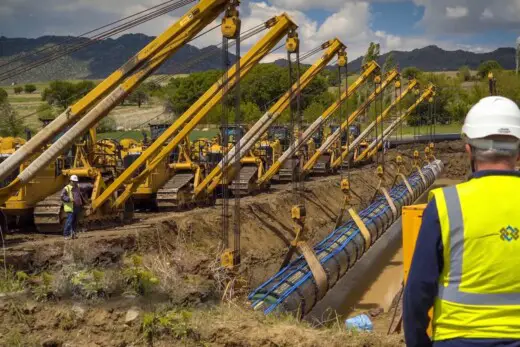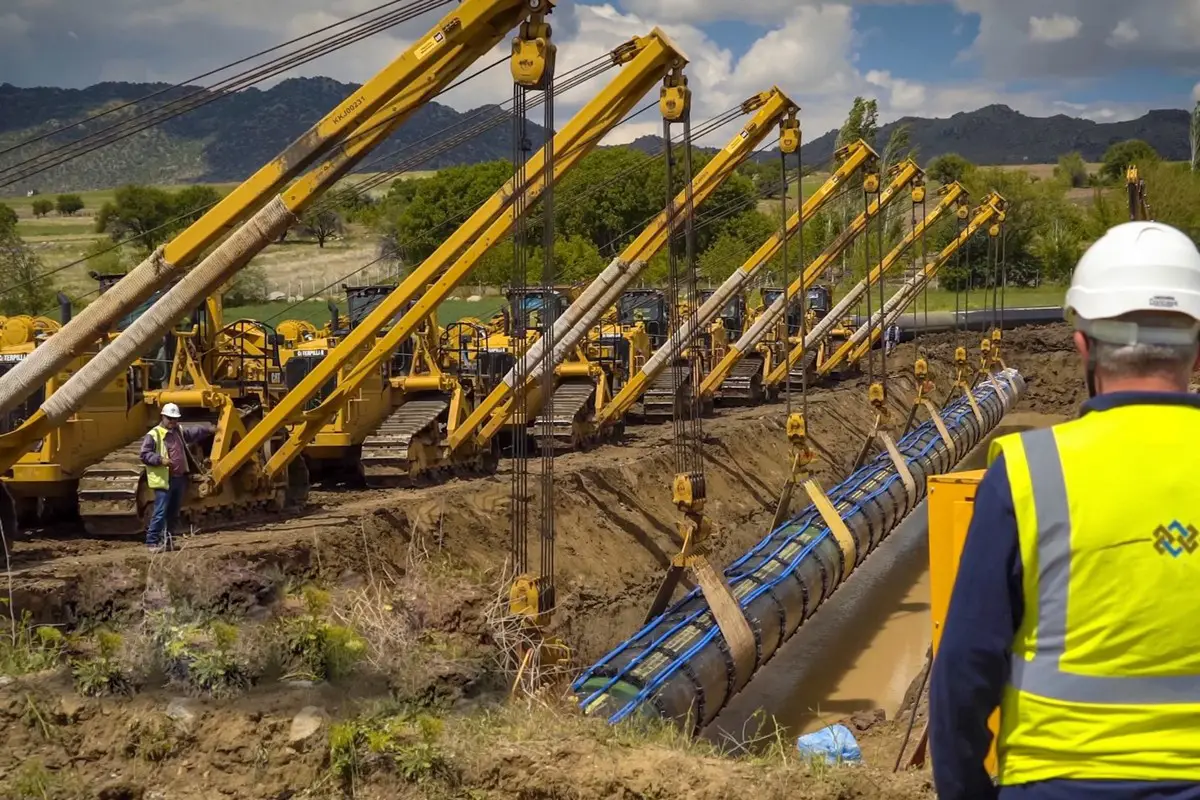Gas pipelines in construction installation, inspection, safety certs advice, Protection, Enhanced look
Gas Pipelines in Construction: Installation, Inspection, and Safety
26 September 2023

photo : https://www.shutterstock.com/image-photo/moscow-russia-may-22-2018-workers-1244484496
Gas pipelines play a role in our lives, even though they remain hidden. Recognizing their significance is important as they provide the energy for carrying out our tasks. However, we must also acknowledge the risks associated with gas if it is mishandled. Hence, conducting safety inspections on these pipelines becomes imperative.
The construction of gas pipelines requires planning and execution to ensure safety. Before installation, licensed engineers meticulously plan every aspect to ensure perfection. This includes the placement of the pipes in the ground and ensuring their secure connection.
In this article, we will explore the elements of gas pipeline construction. We will understand how these pipelines are installed, the inspection procedures involved, and the safety measures implemented throughout. Familiarizing ourselves with these concepts is vital for ensuring the safe functioning of gas pipelines. Let us now take a look at these aspects.
Installation of Gas Pipelines
Gas pipelines play a crucial role in supplying our energy needs, and getting them installed is a precise and skilled job. Let’s begin our journey by understanding the first steps in this process.
Planning and Design
We need to prepare an accurate plan before we begin placing the pipes. Consider it like planning a long-distance car trip. At Gas Safety Certs, we have qualified engineers who examine the ground, the environment, and other important things. They also take care of the paperwork, getting all the permissions and approvals needed from the local authorities. This planning phase is like setting the stage for a big performance.
Excavation and Trenching
It’s time to dig in once we know where the pipeline should go. Picture this like digging a deep and narrow ditch in your backyard. The size of the trench depends on how big the pipeline is and what the rules say. It’s kind of like making space for a river to flow.
Pipe Placement
We bring in the pipeline after the trench is complete. Special machinery is employed to carefully drop the pipe pieces into the trench. We ensure that they fit correctly and are in the proper location so that the pipeline does not have any difficulties later on.
Welding and Jointing
We must securely link the parts to make the pipeline sturdy and smooth. Special procedures, such as assembling puzzle pieces, are used by skilled employees. Because the pipeline will transmit gas at high pressure, these connections must be extremely sturdy. It’s like constructing a bridge to support large vehicles.
So, simply installing gas pipelines involves creating a plan, digging a trench carefully placing the pipes and securely connecting them. It’s comparable to preparing for a performance, constructing a riverbed, and building a sturdy bridge all at once.
Competent experts handle these tasks to ensure a smooth operation. However, our pipeline journey doesn’t conclude here; there’s more to discover, such as inspections and safety precautions. Therefore, stay tuned for the part of our expedition!
Inspection and Quality Control
Now that we’ve explored how gas pipes are installed let’s move on to the next step: making sure these pipelines are top-notch and safe.
Non-Destructive Testing
Imagine having superpowers that let you see through things without breaking them. Non-Destructive Testing (NDT) is like that for pipelines. Methods such as ultrasonic and radiographic testing are used to inspect welds without harming the pipeline. It’s like giving the pipeline an X-ray to spot any hidden flaws or problems early on.
Hydrostatic Testing
We want to be certain that the pipeline can withstand the pressure before putting it into service. Hydrostatic testing is similar to a strength test. We fill the pipeline with water, similar to how a balloon is filled with air to determine if it can expand without exploding. This test confirms that the pipeline is sturdy and will not fail us when carrying gas.
Coating and Cathodic Protection
Imagine putting on a suit of armor to protect yourself from harm. Well, pipelines need armor too, but in the form of protective coatings on their outer layer. This armor prevents corrosion from sneaking in and causing trouble. Plus, for underground pipelines, we use something called “cathodic protection,” which is like a guardian shield that keeps corrosion away.
Visual Inspection
Pipelines, like people, require regular check-ups, just like they do when they go to the doctor. Technicians inspect visually for clear signs of damage, leaks, or wear and tear. They look for dents, scratches, or any outside rust that could put at risk the pipeline’s safety.
In short, after constructing gas pipes, we act as pipeline doctors, inspecting them without hurting them, verifying their strength, providing protective armor, and watching for signs of problems. It’s all part of the goal to make these pipelines safe, sturdy, and trustworthy. But our adventure has not ended; there is still much more to learn about safety precautions and environmental protection. So, stay tuned for the next part of our pipeline journey!
Safety Measures in Gas Pipeline Construction
We have completed the installation and inspection phases. Let us now go to the next critical section, which is about keeping everyone safe:
- Safety Training
- Workers receive thorough safety training.
- They learn how to handle hazards safely.
- Training includes spotting risks and responding to emergencies.
- Gas Leak Detection
- Advanced systems detect and locate leaks.
- Early detection prevents accidents and environmental harm.
- Emergency Response Plans
- Detailed plans outline actions in case of incidents.
- They cover leak containment, worker safety, and cooperation with local authorities.
- Environmental Protection
- Strict rules safeguard the environment.
- Measures include erosion control, wildlife protection, and proper waste disposal.
- Community Education
- Local community awareness.
- People living near pipelines must be aware of what to do in emergencies.
Gas pipelines in construction – Key Takeaways
In conclusion, our journey through the world of gas pipelines has shed light on their vital role in our daily lives. Although these pipelines remain hidden from view, they are the unseen heroes that supply the energy we rely on. However, this essential service must always be paired with unwavering safety.
From careful planning to precise installation, we’ve seen how skilled engineers seamlessly fit pipelines together like pieces in a puzzle. They work behind the scenes to set the stage for reliable performance. They also use tests and special coatings to stop problems and keep the pipes in good shape. Inspectors check them like doctors to be sure they’re okay.
Safety is super important in making gas pipelines. People get special training, use cool detectors, have plans for emergencies to keep everyone safe, and take care of the environment too. Gas pipelines quietly provide our energy, and it’s all thanks to hard work and safety behind the scenes.
Author Bio
Dur-e-Sabih provides ghostwriting and copywriting services. Her educational background in Accountancy helps her in tackling topics ranging from career and business productivity to web development, finance, and digital marketing.
Comments on this guide to Using curtain linings to keep rooms warm or cool article are welcome.
Architecture
Concrete Floors trend in building construction
7 things to know before starting construction project
Comments / photos for the Using curtain linings to keep rooms warm or cool guide page welcome




